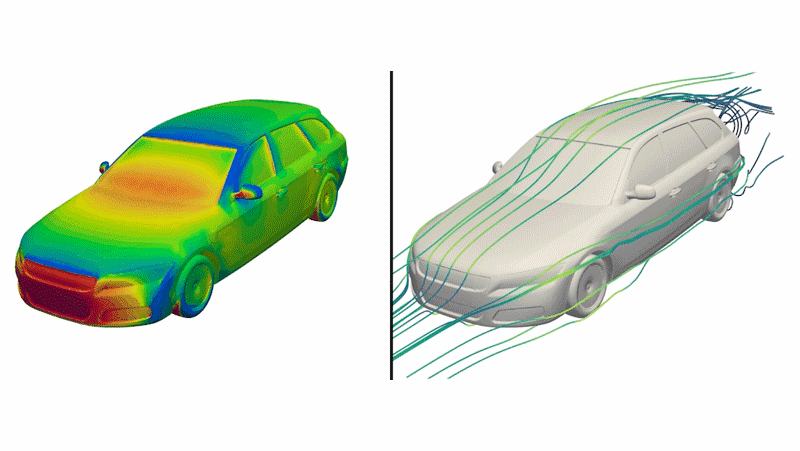“Genesis” can compress training times from decades into hours using 3D worlds conjured from text.


The 2024 solar eclipse across North America spurred numerous NASA-supported research projects that observed the eclipse’s impact on the sun’s corona, Earth’s atmosphere, and radio communications.
Significant data were gathered from ground-based telescopes, aircraft, amateur radio transmissions, and student-launched high-altitude balloons.
Sweeping solar eclipse across north america.


It has been widely acknowledged that self-replicating space-probes (SRPs) could explore the galaxy very quickly relative to the age of the galaxy. An obvious implication is that SRPs produced by extraterrestrial civilizations should have arrived in our solar system millions of years ago, and furthermore, that new probes from an ever-arising supply of civilizations ought to be arriving on a constant basis. The lack of observations of such probes underlies a frequently cited variation of the Fermi Paradox. We believe that a predilection for ETI-optimistic theories has deterred consideration of incompatible theories. Notably, SRPs have virtually disappeared from the literature. In this paper, we consider the most common arguments against SRPs and find those arguments lacking. By extension, we find recent models of galactic exploration which explicitly exclude SRPs to be unfairly handicapped and unlikely to represent natural scenarios.
We also consider several other models that seek to explain the Fermi Paradox, most notably percolation theory and two societal-collapse theories. In the former case, we find that it imposes unnatural assumptions which likely render it unrealistic. In the latter case, we present a new theory of interstellar transportation bandwidth which calls into question the validity of societal-collapse theories.
Finally, we offer our thoughts on how to design future SETI programs which take the conclusions of this paper into account to maximize the chance of detection.
Fermi Paradox paper on Arxiv http://arxiv.org/abs/1111.
Von Neumann Self-Replicating Probes. Percolation Theory, Interstellar Societal Collapse, ETI May Still Exist in our Galaxy.
==Conclusion==
This paper was arranged in three parts. First, we introduced SRPs, presented the prevalent arguments against them, and showed that such arguments leave room for future SRP consideration. Namely, we proposed that recent literature has been overzealous in its exclusion of SRPs and we encourage their return to the field.
Second, we presented percolation theory and its nonsociological explanation for the Fermi Paradox. We then showed that the theory can be extended in very reasonable ways which.
undermine its primary conclusion that galactic expansion might.
be intrinsically bounded.
Third, we reviewed two theories of interstellar societal collapse and showed a few counter-arguments to each theory. Furthermore, we introduced ITB theory and showed that its implications might suggest a fundamental error in such theories.
We then discussed one additional paper theorizing that interstellar societies shrink back to their homeworlds and explained that the model involves a number of unlikely assumptions. Following this final analysis, we described the best theory yet oered on the Fermi Paradox which permits intragalactic ETI, namely that exploration probes may currently reside in our solar system, yet undiscovered. Lastly, we offered our thoughts on how to design future SETI programs so as to maximize the likelihood of success.
Science, Technology \& the Future: http://scifuture.org.

Solid-state lithium batteries are promising energy storage solutions that utilize solid electrolytes as opposed to the liquid or gel electrolytes found in traditional lithium-ion batteries (LiBs). Compared to LiBs and other batteries that are used worldwide, these batteries could attain significantly higher energy densities of more than 500 Wh/kg−1 and 1,000 Wh/l−1, which could be advantageous for powering electric vehicles and other electronics for longer periods of time.
Despite their possible advantages, existing solid-state lithium batteries exhibit significant limitations that have so far prevented their large-scale deployment. These include the active lithium loss that can occur while the batteries are charged and discharged, which can reduce their efficiency and overall performance.
This loss of lithium is caused by an inhomogeneous lithium plating. Devising effective strategies and thin lithium metal foils that could limit the loss of lithium in solid-state batteries is thus a key goal for the energy research community.


It’s time to recalibrate the navigation systems on ships, airplanes, and (given the time of year) Santa’s sleigh: the position of the magnetic North Pole is officially being changed, continuing its shift away from Canada and towards Siberia.
Experts from the US National Oceanic and Atmospheric Administration (NOAA) and the British Geological Survey (BGS) have joined forces – as they do every five years – to produce a new, more accurate World Magnetic Model (WMM).
While the geographical North Pole stays fixed in place (at the very summit of the Earth’s rotational axis), the WMM pinpoints the magnetic North Pole – where Earth’s magnetic field points straight down, a perfectly vertical magnetic field.

In-plane magnetic fields are responsible for inducing anomalous Hall effect in EuCd2Sb2 films, report researchers from the Institute of Science Tokyo. By studying how these fields change electronic structures, the team discovered a large in-plane anomalous Hall effect.
These findings, published in Physical Review Letters on December 3, 2024, pave the way for new strategies for controlling electronic transport under magnetic fields, potentially advancing applications in magnetic sensors.
The Hall effect is a fundamental phenomenon in material science. It occurs when a material carrying an electric current is exposed to a magnetic field, producing a voltage perpendicular to both the current and the magnetic field. This effect has been extensively studied in materials under out-of-plane magnetic fields. However, research on how in-plane magnetic fields induce this phenomenon has been very limited.
